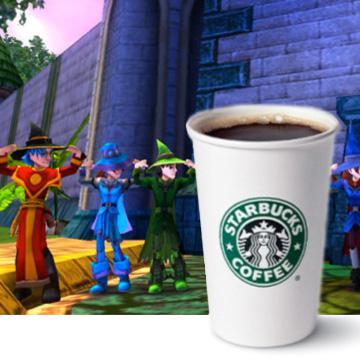Worried About Video Games? It’s time to exhale.  Video games often get a bad rap, but it’s time we give them a little more credit. Video games and interactive media can have a positive impact on self-efficacy which increases resilience, optimism, and motivation. In this and the following two posts taken from my presentation at APA in August, I will describe the potential mastery experiences just waiting to be conquered.
Video games often get a bad rap, but it’s time we give them a little more credit. Video games and interactive media can have a positive impact on self-efficacy which increases resilience, optimism, and motivation. In this and the following two posts taken from my presentation at APA in August, I will describe the potential mastery experiences just waiting to be conquered.
Earlier this year at the SxSW Interactive Media conference, I was standing in a very long line at a Starbucks and got to talking with blogger Kristin Brandt (2012). The conversation started over cowboy boots, but as often happens when I tell someone of my work in the psychology of media technologies, Kristin began to share views on video games, particularly in relation to her young son. She wasn’t a fan. Kristin told me that for the last year, her son had been ‘obsessed’ with the massively multiplayer online role-playing game (or MMORPG) Wizard 101.

In spite of her reservations about gaming, Kristin told me that because she was away from home at the conference, she would log-in each morning and meet her son in the wizard world for 15 minutes or so. Her son would lead her around, giving her advice about survival (Don’t step off the sidewalk, mom, the troll will get you), how to deal with other wizards (duh, don’t try to chase someone who has a unicorn), which spell to cast, and also, along the way, he would tell her about his friends, school, and his day ahead.
She added that her son had some learning challenges, but they had a support team in place and that this year things were really looking up for him. In fact, her son was having a very successful year.
“Wow” I said, “Your son has advanced through all those levels, mastered a huge number of spells, and is confident enough to be a guide for you, his mother, around the Wizard worlds. He also has figured out how to connect with real world friends there. Do you think that his success in Wizard 101 has contributed to his confidence?”
For Kristin, this was a new way of thinking about her son’s experience in Wizard101. It would be for lots of parents and that’s too bad.
A Day in the Life of a Child with a Learning Disability
Imagine you that you are a child who struggles at school with a learning disability, like ADD or ADHD. What are your days like? More than likely, instead of feeling successful, competent and valued, you are experiencing a pattern of failures at school and in social relationships.

Hidden Mastery Experiences
I’m not saying we should sign all our kids up for Wizard101.
What I do want to do is suggest is that we need to reorient our point of view about gameplay and digital media because in some very fundamental ways, independent of content and format, they can have a positive impact on self-efficacy, increasing resilience, optimism, and motivation. Underlying all interactive media are potential mastery experiences just waiting to be found.
Portals of Opportunity
Our digital environment enables a new sense of individual and collective agency, locally and globally. While it’s tempting to say something like “our new media” or “our new digital environment,” we have to get past thinking of it as new and man up. This “new environment” is the world that we live in and that we’re not going back to pre-Internet times. It is true that communications have a completely different structure compared to 25 years ago, but we need to step outside the binary perspective of digital natives versus digital immigrants, old media versus new media, and online versus offline and accept that it’s complicated and it’s messy and there’s a lot we don’t know. At the same time, not knowing shouldn’t keep us from exploring opportunities and potential.
We live in a world of peer-to-peer social networks on a global scale (Ito, 2009; Shirky, 2008). We live in a world where we have social connectivity at our fingertips and information on-demand from the mobile devices in our pockets. These aren’t phones, they are portals to opportunities of every kind, whether you’re a teen updating your Facebook status or a rural farmer getting current market prices for your crops (Manobi Development Foundation, 2011).
Why does this matter? All of us make choices and take action based on our core assumptions and beliefs about our ability to have an impact on our world (Bandura, 2002). If we believe that we can master a situation and produce a positive outcome, then we are motivated to take action, to try. If we don’t think our effort will achieve anything, we won’t try. Helplessness and depression set in.
In a world where we can actively engage and interact, whether it’s to find a local Starbucks, learn a new wizard spell, text a donation to a Red Cross disaster effort or run with Zombies, the locus of control is increasingly moving into the hands of the user. Interacting with and manipulating data is now a normal behavior. This is a pervasive and significant psychological shift that has established a new baseline of expectations for all of us about our ability to act on the world in ways that matter.

Self-efficacy, as defined by Bandura (1982), is the belief in our ability to act and achieve positive results. Our perceptions of self-efficacy not only affect our behavior. Perhaps more importantly, they influence our goals and aspirations because it is what we use to predict the likelihood we will succeed. Positive outcomes of our actions enhance our perception of self-efficacy. The higher our perceived efficacy, the bigger the challenges we are willing to undertake, the more committed we are to them, the more optimistic we are about our chances of success, and the more resilient we are in the face of set-backs. Positive perceptions of self-efficacy allow us to make decisions to take advantage of opportunities instead of avoiding costs and risks (Krueger & Dickson, 1994).
We have seen manifestations of this increasing sense of agency in multiple ways all around the world, from the Arab Spring and Occupy Wall Street Movements to the emergence of crowd-sourced funding like Kickstarter.com and microloans such as offered through Kiva.org. People are no longer content to even sit and watch television passively. Increasingly television viewers actively multitask their media.
According to a recent Nielsen poll, 88% of tablet owners and 86% of smartphone owners reported using their devices while watching TV at least once a month; 45% reported doing it daily. It is so prevalent, that television executives are climbing over each in the race to develop ‘social television.’ From American Idol and Top Chef to Mad Men, television programming integrates real-time communications and games through extended web and mobile applications, and opportunities for fan interaction and exploration. The ability to interact, share and communicate is the new normal.
In Part 2, I will discuss how this new normal of interactive environments coupled with game design support learning and development in the spirit of Vygotsky and Erikson.
——
References
Bandura, A. (1982). Self-Efficacy Mechanism in Human Agency. American Psychologist, 37(2). Retrieved from
Bandura, A. (2002). Growing primacy of human agency in adaptation and change in the electronic era. [Journal; Peer Reviewed Journal;]. European Psychologist, 7(1), 2-16. doi: 10.1027//1016-9040.7.1.2
Brandt, K. (2012). How Wizard 101 Actually Helped My Son. Simply Stated (March 16). Retrieved from http://simplystated.realsimple.com/2012/03/16/how-i-learned-to-hate-wizard101-a-little-less/
Hughes, L., & Cooper, P. (2007). Understanding and Supporting Children with ADHD. Thousand Oaks: Sage.
Ito, M. (2009). Introduction. In K. Varnelis (Ed.), Networked Publics (pp. 1-14). Cambridge: MIT.
Krueger, N., & Dickson, P. R. (1994). How Believing in Ourselves Increases Risk Taking: Perceived Self-Efficacy and Opportunity Recognition. Decision Sciences, 25(3), 385-400.
Manobi Development Foundation. (2011). Case Studies: In Farming, from http://www.manobi.net/foundation/?M=2&SM=6
Shirky, C. (2008). Here Comes Everybody. New York: Penguin Books.
Footnotes
[1] http://www.parenting.com/health-guide/adhd-attention-deficit-hyperactivity-disorder/childs-experience

